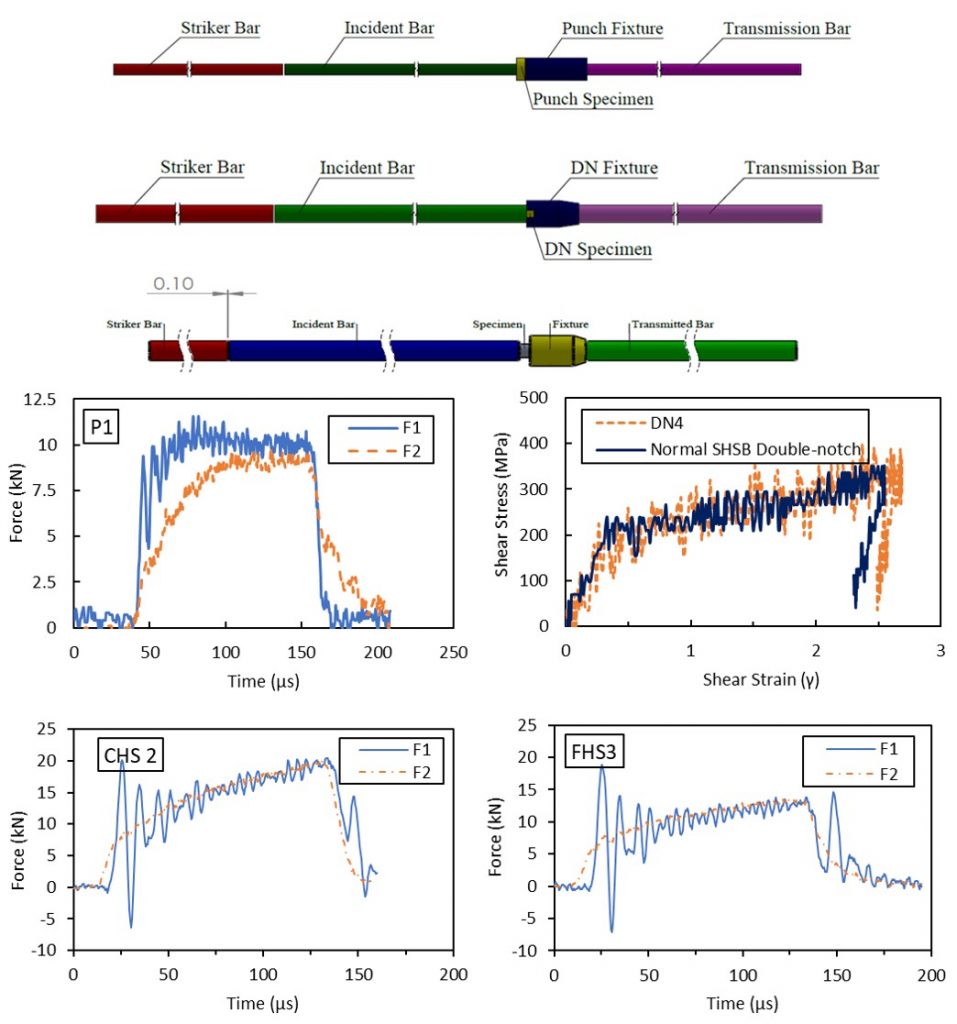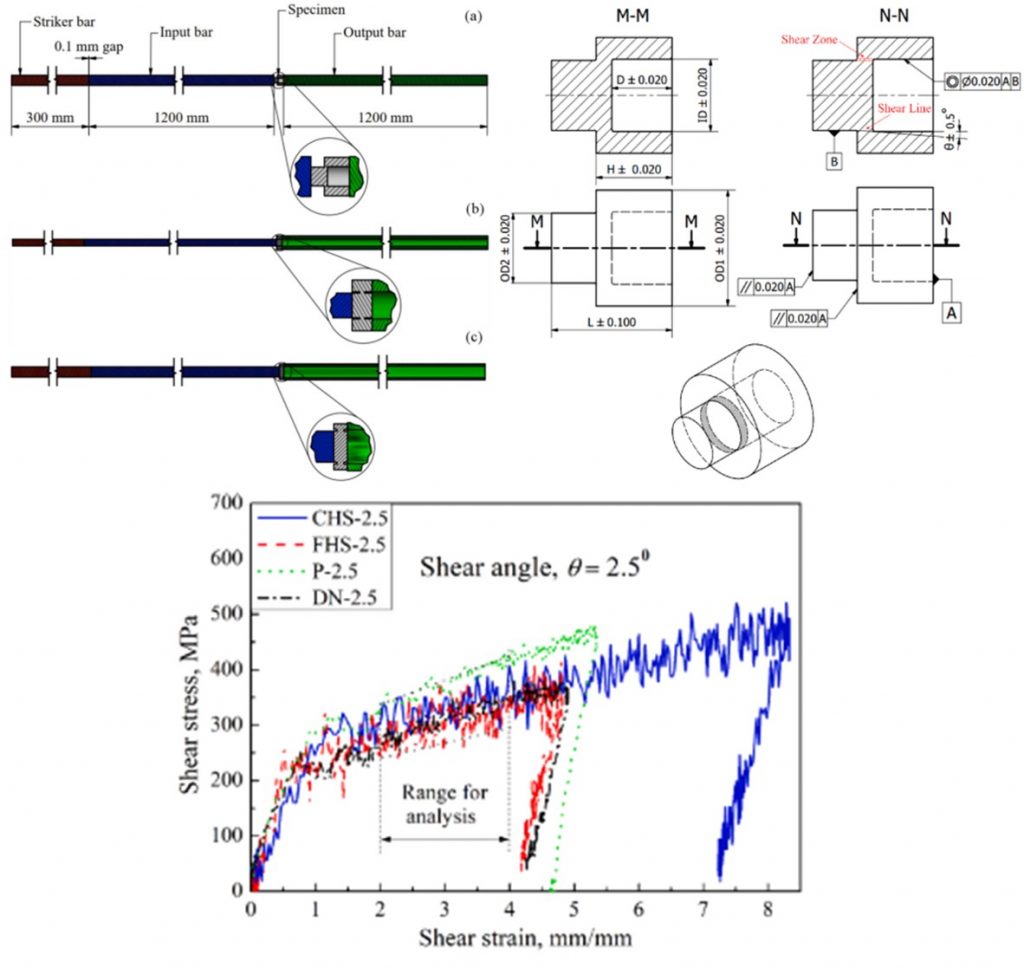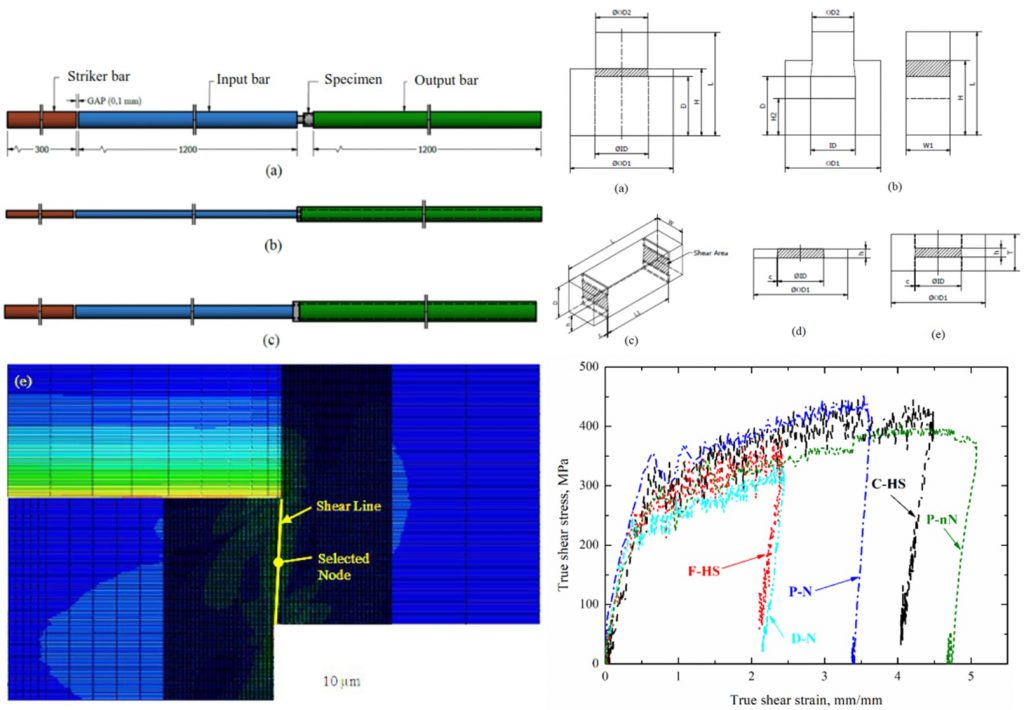Engineering Design Center
Development of Split-Hopkinson Shear Bar Fixture

Different types of transmission bars used in the split-Hopkinson shear bar (SHSB) resulted in inefficiencies in manufacturing and application of the apparatus. In this research, Author tries to design a fixture so that SHSB could be conducted with a conventional solid transmission bar. The research is conducted by using finite element analysis in Abaqus/CAE. The research successfully determined the effect of the fixture dimensions on the result of the punch, double-notch, and hat-shaped techniques.
The Influence of Shear Angles on the Split Hopkinson Shear Bar Testing

This research focuses on the split Hopkinson shear bar testing, especially on the effect of the shear angles on generating the shear stress – shear strain curves, shear strain rates, and final shear strains. Four geometries of the specimen were studied, i.e. circular hat-shaped (CHS), flat hat-shaped (FHS), punch (P), and double-notch (DN). This research is conducted with three main considerations, i.e. the same kinetic energy (7.34 Joule), the same shear area (± 25 mm2), and the shear angles were varied as ± 2.5o, 5o, 7.5o, 10o, and 15o. This study shows that each testing has its own advantages and disadvantages and they generate different strain rate, strain rate gradient, final strain, and shear stress-shear strain relations which is not desirable. In terms of sheer angles, Authors recommend using a shear angle of approximately 5o. This shear angle generates the best purity on the shear loading among other shear angles and also the flow stress variations (among four tests) are acceptable ± 16.4%.
Publication
Results Comparison for Hat-shaped, Double-notch and Punch Testing of Split Hopkinson Shear Bar Technique

The main purpose of this study was to compare these three techniques to determine the shear stress-shear strain of aluminum alloy 2024-T351. The study was conducted using the Abaqus/CAE® software. The circular hat-shaped and punch (with and without notch) techniques used a quarter-section solid 3D model. The flat hat-shaped and double-notch techniques used a half-section solid 3D model. This study successfully tested and compared the three SHSB techniques, with a number of considerations, i.e. the same parameter values for kinetic energy, shear area, and shear angle. Each technique has its own advantages and disadvantages in terms of force equilibrium, flow stress fluctuation, constant strain rate, machine-ability, ease of experiment, etc. The optimum technique among the three is the hat-shaped technique.
Publication
Hydraulic Boom Shape Optimization
In this research, the optimization of boom shape for a hydraulic loader is conducted. A 924F type of wheel loader is taken for modeling the optimization domain. The optimization process is focused on the shape of the boom from the side view. The objective of the optimization is minimizing the material used while maintaining allowable stress that occurs during normal operation. The result of the optimization process is calculated by comparing the weight of the boom after and before optimization.
Design and manufacture of auto printing machine for footwear industry
The footwear industry is a labor-based industry that needs a lot of human power to conduct the manufacturing process. To cope with labor issues, factory leadership decide to develop automation technology. This research examines the development of auto printing machines that includes the design, manufacture, and test of auto printing machines for the footwear industry. Integration of the Internet of things (IoT) system to the established printing machine is performed for an autonomous monitoring system in order to evaluate machine performance.
